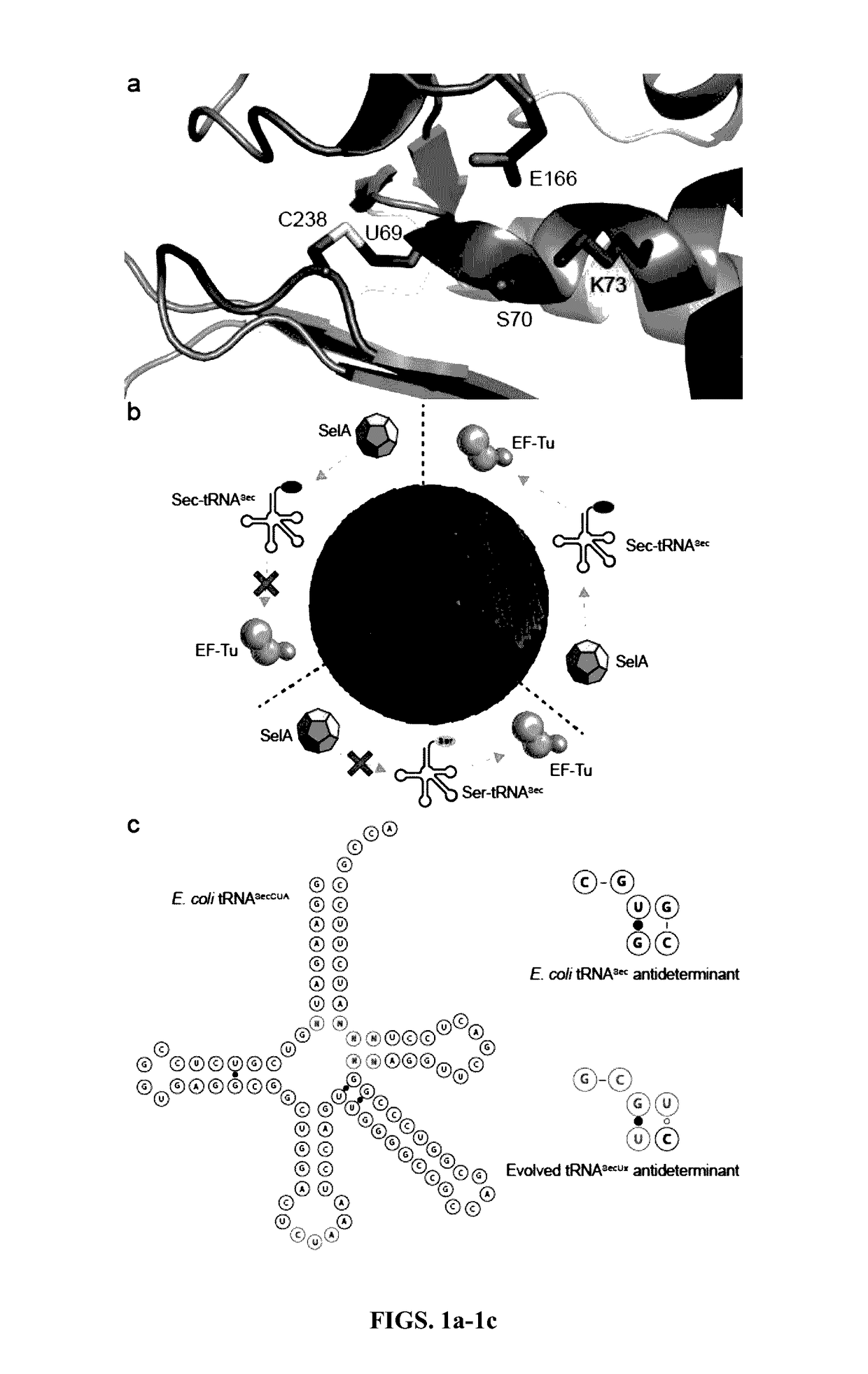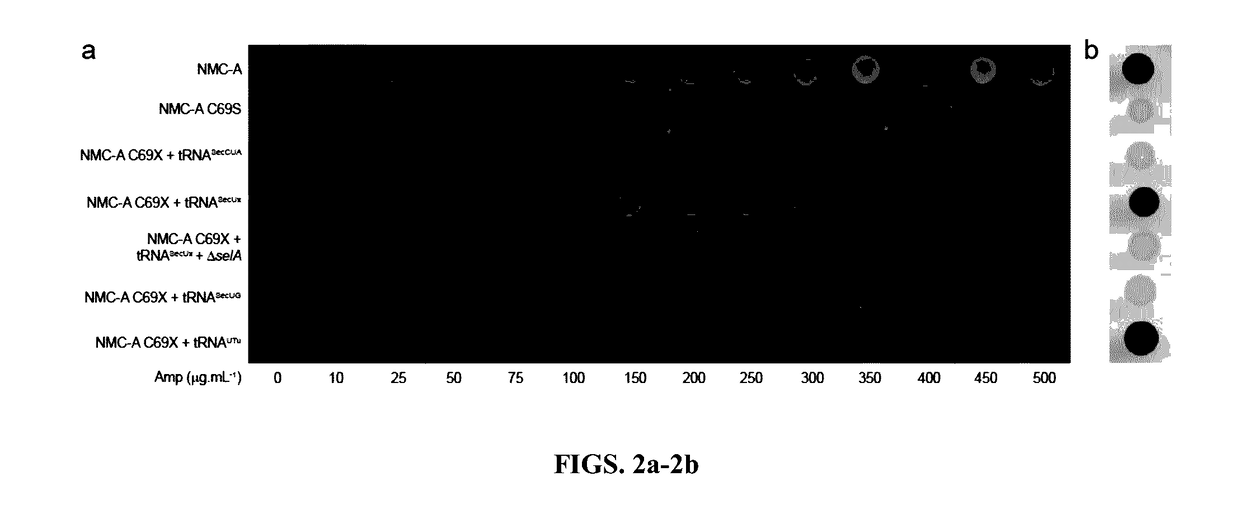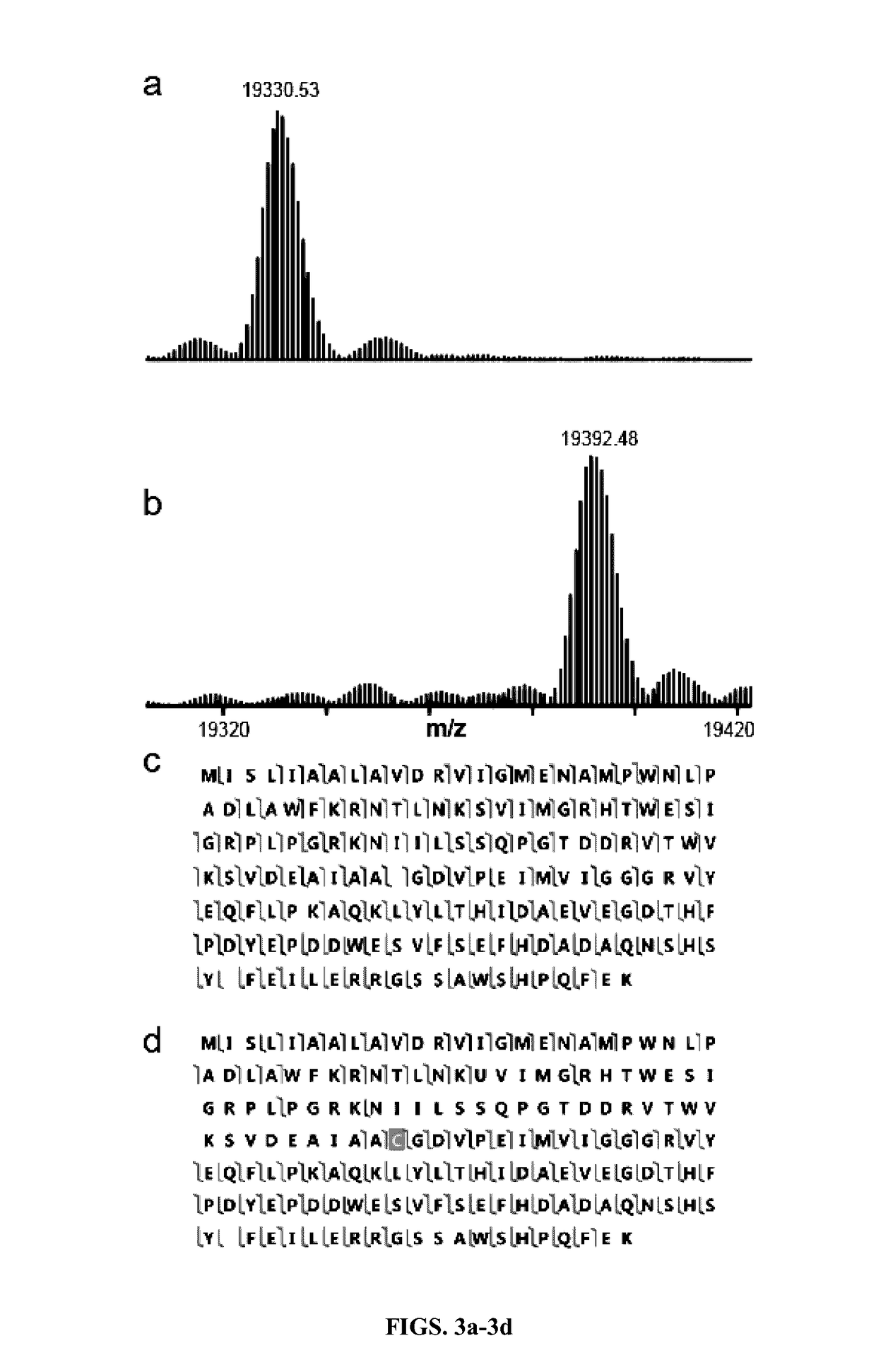Transgenic bacteria with expanded amino acid usage and nucleic acid molecules for use in the same
a technology of nucleic acid molecules and amino acids, applied in the field of molecular biology and protein engineering, can solve the problems of rapid loss of any introduced system, difficulty in predicting the extent of a non-canonical amino acid charged by an engineered trna synthetase,
- Summary
- Abstract
- Description
- Claims
- Application Information
AI Technical Summary
Benefits of technology
Problems solved by technology
Method used
Image
Examples
example 1
Selection of tRNAs
[0035]A method of genetic selection capable of discriminating different levels of selenocysteine incorporation was developed. To specifically ‘addict’ a reporter protein to selenocysteine rather than serine, the NMC-A β-lactamase from Enterobacter cloacae was used. This enzyme has high sequence similarity to the SME-1 β-lactamase from Serratia marcescens, an enzyme that has previously been shown to require a disulfide bond adjacent to the active site serine residue for activity, but that confers a significant fitness cost on E. coli.16 First, a C69S mutant was constructed of NMC-A, which failed to confer resistance to ampicillin (MIC−1), indicating that the disulfide bond was essential for activity (FIG. 1b). Then cysteine 69 was replaced with an amber stop codon (X69; FIG. 1a) for library selection, hypothesizing that the incorporation of selenocysteine and the formation of a selenyl-sulfhydryl bond would restore activity. (Swarén et al., 1998)
[0036]To eliminate a...
example 2
Methods
Strain Construction
[0041]The selAB and selC genes were deleted from E. coli DH10B using the lambda Red system adapted from Datsenko and Wanner (2000). Antibiotic resistance cassettes were excised using FLP recombinase to generate strain DHΔabc. Deletion of the entire fdhF open reading frame yielded strain DHΔabcF.
[0042]E. coli C321βA was obtained from Addgene. A˜12 kb genomic region containing lambda phage genes and the TEM-1 β-lactamase inserted during development of the strain (Lajoie et al., 2013) was removed to facilitate stable growth at 37° C. and restore sensitivity to β-lactam antibiotics. Subsequent deletion of the selAB and selC genes and excision of antibiotic resistance cassettes generated strain RTΔA. To improve recombinant protein production, deletion of the lon gene encoding the Lon protease and truncation of the rne gene to remove 477 amino acids from the C-terminal of RNase E was performed, resulting in RTΔA.2.
Reporter Plasmids
[0043]All reporter plasmids were...
PUM
| Property | Measurement | Unit |
|---|---|---|
| Fraction | aaaaa | aaaaa |
| Fraction | aaaaa | aaaaa |
Abstract
Description
Claims
Application Information
 Login to View More
Login to View More - R&D
- Intellectual Property
- Life Sciences
- Materials
- Tech Scout
- Unparalleled Data Quality
- Higher Quality Content
- 60% Fewer Hallucinations
Browse by: Latest US Patents, China's latest patents, Technical Efficacy Thesaurus, Application Domain, Technology Topic, Popular Technical Reports.
© 2025 PatSnap. All rights reserved.Legal|Privacy policy|Modern Slavery Act Transparency Statement|Sitemap|About US| Contact US: help@patsnap.com



